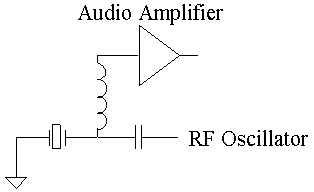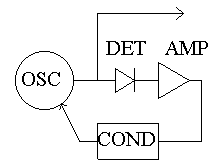The reduction of crystal oscillators’ vibration sensitivity is currently receiving the attention of many in the frequency control industry including both crystal and oscillator manufacturers. Oscillators have reached the level of performance where a person walking across the room can degrade the close-in phase noise and a relatively quiet fans can generate sidebands well above the noise floor of the better oscillators. Present techniques to reduce vibration sensitivity include the reduction of the crystal’s acceleration sensitivity, vibration isolation systems, and active compensation. One compensation technique uses an accelerometer aligned with the crystal’s sensitivity vector to generate a correction signal and another technique uses two crystals oriented such that the acceleration vectors point in opposite directions. A refinement of the latter technique scales the contribution by each crystal to the final frequency so that crystals with different acceleration sensitivities may be used. These techniques have been successfully implemented but they are somewhat expensive and difficult to manufacture.
In an effort to simplify the manufacture of vibration compensated oscillators, three new ideas are being investigated. One technique is an extension of the two crystal approach mentioned above. In this new implementation, the crystals are mounted with the acceleration vectors pointing in the same direction which usually means side-by-side on the PCB – a far easier mounting scheme, especially if the acceleration vector is not normal to one of the crystal package axes. Additionally, the crystals are required to havedifferent acceleration sensitivities, which is usually the case with randomly chosen crystals. Two oscillators using the crystals are phase locked and, since the acceleration sensitivities are different, the tuning voltage contains vibration information. This tuning voltage is scaled and applied to both oscillators using a bootstrapping technique that avoids destabilizing the PLL. (For a more detailed description, see: Bootstrapping a Phase Locked Loop for Better Performance.)
Another technique uses the crystal as its own accelerometer by detecting audio frequency piezoelectric voltages directly on the crystal plates. The crystal is operating in a manner similar to an electret microphone and the audio amplifier must have a very high input impedance. The RF oscillator circuit is coupled to the crystal through a small value capacitor to reduce loading of the audio signal and a self-resonant choke isolates the audio amplifier from the RF signal. In order for this compensation scheme to work the microphonic sensitivity vector must align with the frequency sensitivity vector. Digital signal processing may be used to correct frequency response differences.

In certain oscillator topologies, easily detected amplitude modulation due to vibration has been observed. Again, the vector properties would need to match the frequency modulation vector but such a match may be likely if the mechanism of modulation is the same. The AM detector output would require signal conditioning but a superficial examination of the signals suggested that a fairly simple “emphasis” circuit may be all that is necessary.
